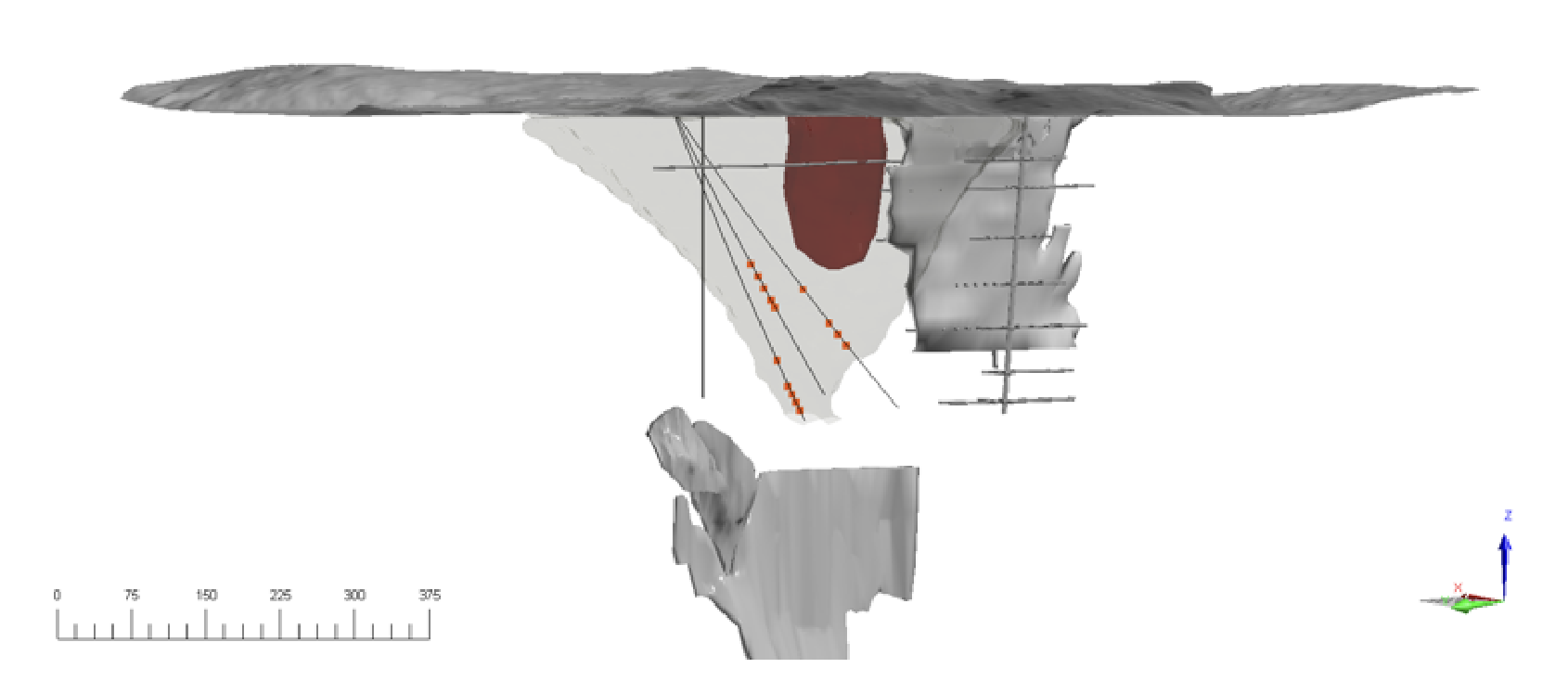August 17, 2024
VALE BASE METALS
Muon Tomography for Mine Extension
High-resolution imaging of density anomalies consistent with known semi-massive sulphide mineralization, delineating lateral and vertical extension of known geology, as well as transition zones, strongly correlated with the mineralization shell.

Totten Mine
PROJECT
Sudbury, Canada
LOCATION
Borehole
IDEON DETECTOR TYPE
Semi-Massive Sulphide (Nickel-Copper-PGE)
DEPOSIT TYPE
Highlights
The unconstrained analysis, later validated with drill data and geological modelling provided by Vale Base Metals, provided high-resolution geological insights throughout the survey area, demonstrating the capability of the Ideon platform even in contexts where there is little prior knowledge.
BACKGROUND
Located just outside of Sudbury, Ontario, the Totten mine opened in 2014 (after operations were suspended since 1972) with a 20-year projected mine life.
The Totten deposit is situated along the Worthington Offset, one of the fractures resulting from the creation of the Sudbury Basin 1.8 billion years ago, when a comet punctured Earth’s crust, allowing material from the mantle to well up and fill the basin with melted rock. The deposit consists of semi-massive sulphides hosted in a narrow quartz-diorite dyke. It comprises a blend of lower grade metals and high-grade bands throughout.
IDEON SOLUTION
Ideon provided Vale Base Metals with a full-service imaging program, including customized deployment design and modelling to ensure optimal outcomes, turnkey equipment bundling and installation logistics, continuous imaging with regular updates to show progressive resolution improvement, remote monitoring and diagnostics, geoscientific analysis and interpretation, and onsite results immersion.
The objective of the study was to demonstrate muon tomography in an area where the geological model was well understood, helping to delineate the Totten deposit as part of mine-life extension work. Ideally, the survey would help Vale Base Metals determine the lateral and vertical extent of the mineralized zone, as well as delineate the transition/edges. The primary volume to explore was the area upward from existing known mineralization.
Ideon deployed 16 borehole detectors in three sensor arrays, down three drillholes emanating from a single pad on the Totten site. The detectors were situated from approximately 200 m to 400 m deep and gathered data over a period of 6 months. Data intake and analysis were conducted remotely via 4G link to verify quality and calibration, and to develop radiographic images of subsurface density anomalies with continuously improving clarity.

Sixteen borehole detectors were deployed down three drillholes. The target mineralization shown (blind throughout the project) is shown as the red surface. The volume of highest sensitivity to small 10 m thick structures is shown as the semi-transparent surface.
Ideon then delivered a robust 3D density model of the target area using muon data without any constraining geological information. This was a blind, unconstrained data analysis, but Vale Base Metals had already mapped the area with >100 drillholes. After the delivery of the 3D density model, results were mapped to the Vale geological model to validate outcomes.

Discover the outcomes at Totten
This project proved the capability of muon tomography in 3D mapping subtle mineralization regions with far better resolution than other geophysical methods. Additionally, this project demonstrated the low-impact nature of the Ideon muon tomography technology, resolving a large volume of earth at high resolution from a single drill pad.
Download the full case study for detailed content and analysis at the Totten project.
